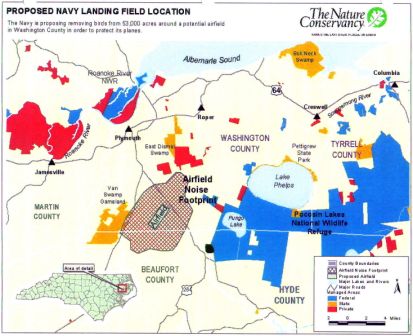
Washington, D.C. — Congressmen G. K. Butterfield and David Price applauded May 9 legislative language included in the national defense authorization bill that bars the Navy from building an outlying landing field at a site in North Carolina’s Washington and Beaufort counties.
“It’s a strong and positive step away from a site that would put our community, pilots and aircraft in danger,” Butterfield said. “Now we have to focus on finding an alternative that fulfills the needs of both the Navy and the community.”
Price, who has been working with Butterfield to compel the Navy to work with the state to find a feasible alternative site, said the language provides a clear message from Congress.
“We’re effectively saying to the Navy that Congress is not going to allow the Washington County site,” Price said. “This provision in the Defense Bill will complement our efforts in the Appropriations Committee to block the funding for the site and to direct the Navy to work with North Carolina to find a workable alternative for an OLF.”
The language, included in the National Defense Authorization Act of 2007, specifically repeals the authorization of funds and future funds for an outlying landing field (OLF) at the site in Washington and Beaufort counties. The bill, which is expected to be approved by the Armed Services Committee late tonight, is scheduled to be voted on by the full House next week.
Butterfield and Price said they will continue to work to ensure that similar language is included in the upcoming defense appropriations legislation.
The Navy already has purchased more than 2,000 acres in Washington and Beaufort counties as part of a 30,000-acre OLF the Navy said it needs to train pilots to land on aircraft carriers.
The proposed site lies just west of an area that was established specifically as a waterfowl sanctuary where thousands of birds winter annually. At peak, there are about 25,000 tundra swans and more than 65,000 snow geese which regularly fly out to feed in the farm fields just west of the site.
Last week, Navy Secretary Donald Winter told Butterfield the Navy is ready and willing to work with the state to find an alternative site.



Be the first to comment